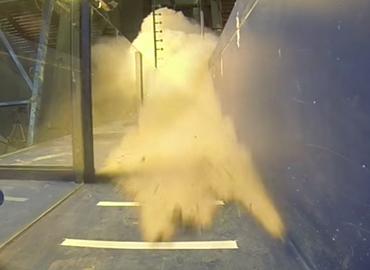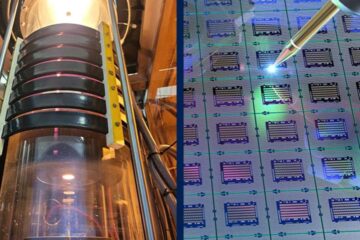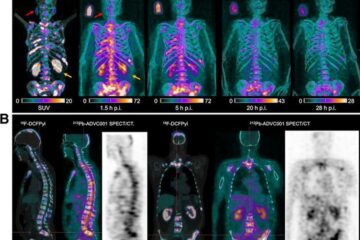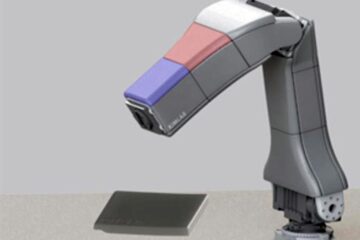A look inside volcanic flows

Researchers created their own flows with 3,500 pounds of volcanic ash Credit: Massey University
An empty boiler house and 1.5 tons of thick volcanic ash have given researchers at New Zealand's Massey University and Georgia Tech a look into the inner workings of pyroclastic flows in the largest-scale experiments of volcanic flows that have been conducted. They saw something they didn't expect.
In a paper published last week by Nature Geoscience, the team describes two separate transport areas that have been well-studied: a non-turbulent underflow and a fully turbulent, ash cloud region at the top of the flow. But volcanic flows apparently have a previously unrecognized third zone where the currents meet.
“Inside this middle zone, the gas-particle mixture behaved fundamentally differently from the turbulent suspension cloud above and the particle-rich avalanche of pumice below,” said Massey's Gert Lube. “These mesoscale turbulence clusters control how the internal structure and the damage potential of pyroclastic flows evolves during volcanic events.”
Pyroclastic flows, like the ones that covered Pompeii, are avalanches of fast-moving clouds of hot ash, rock and gas that are emitted during eruptions. They are responsible for 50 percent of volcanic fatalities every year.
“Our experiments allow us to better understand the physics of something we'll never see: the inside of an actual volcanic flow,” said Massey's Eric Breard, the lead author who will begin a postdoctoral fellowship at Georgia Tech in January. “By studying how quickly this mesoscale region grows, and how its dynamics change, it ultimately can tell us how dangerous the flows can be.”
To create and measure the flows, the team used Massey's one-of-a-kind eruption simulator. The team climbed a 12-meter tower in a repurposed boiler house and poured more than 3,500 pounds of pumice and ash down a 12-meter narrow chute. High-speed cameras recorded the flow while sensors captured the data.
“These experiments demonstrated that in the intermediate transition zone between the fully turbulent upper part of the flow and the underlying concentrated underflow, the energy from the largest scales of fluid motion is extracted by particles that almost exactly follow the fluid motion,” said co-author Josef Dufek, an associate professor at Georgia Tech. “This creates dendritic structures, or waves of particles, that slow the flow down, and provide the rate-limiting step for particles entering the underflow where they can cause the most damage.”
“This opens a new path toward reliable predictions of their motion, and will be particularly topical for hazard scientists and decision makers, because they will lead to major revisions of volcanic hazard forecasts and ultimately more effective measures for keeping people safe,” said Lube.
###
Massey and Georgia Tech also received support from scientists at the University of Auckland and State University of New York.
Media Contact
All latest news from the category: Earth Sciences
Earth Sciences (also referred to as Geosciences), which deals with basic issues surrounding our planet, plays a vital role in the area of energy and raw materials supply.
Earth Sciences comprises subjects such as geology, geography, geological informatics, paleontology, mineralogy, petrography, crystallography, geophysics, geodesy, glaciology, cartography, photogrammetry, meteorology and seismology, early-warning systems, earthquake research and polar research.
Newest articles

Silicon Carbide Innovation Alliance to drive industrial-scale semiconductor work
Known for its ability to withstand extreme environments and high voltages, silicon carbide (SiC) is a semiconducting material made up of silicon and carbon atoms arranged into crystals that is…

New SPECT/CT technique shows impressive biomarker identification
…offers increased access for prostate cancer patients. A novel SPECT/CT acquisition method can accurately detect radiopharmaceutical biodistribution in a convenient manner for prostate cancer patients, opening the door for more…

How 3D printers can give robots a soft touch
Soft skin coverings and touch sensors have emerged as a promising feature for robots that are both safer and more intuitive for human interaction, but they are expensive and difficult…




















